- Home
- Joel C. Rosenberg
Implosion Page 5
Implosion Read online
Page 5
Historian Washington Irving noted that at one point during the conflict, “half of the officers of the rank of captain were inclined to retire, and it was probable their example would influence their men,” who would not reenlist unless they saw their leaders making the same commitment.[67] At that point, an utterly depressed George Washington, commander of the American forces, wrote a letter to the president of the Congress, saying, “I am sorry to be necessitated to mention to you the egregious want of public spirit which prevails here. . . . I find we are most likely to be deserted in a most critical time.”[68] In a letter to his secretary, Washington wrote, “Could I have foreseen what I have experienced and am likely to experience, no consideration upon earth should have induced me to accept this command.”[69]
Yet George Washington did not abandon the cause or his responsibilities. Despite how dark the situation often seemed to be, the military commander chose to believe that the impossible was only impossible if they gave up and stopped trying. Thus he rallied himself and his men to commit their lives, their fortunes, and their sacred honor to the cause of liberty, as stated in the immortal words of the Declaration of Independence. He encouraged his distraught and downtrodden men to press on despite the enormous challenges and seemingly overwhelming odds against them, and they chose to follow his lead.
In the end, the cost was brutally high. More than twenty-two thousand Americans lost their lives fighting for liberty, out of a population of merely 2.5 million. Yet the enterprise was a stunning success. By God’s grace, the Revolution succeeded. Washington and his men and the Founding Fathers who had asked them to go into battle not only established a new country but also helped create a remarkable new model of freedom and democracy for the rest of the world.
A “Volcanic Upheaval”
The Civil War posed an even greater existential threat to the republic.
Henry Clay, Speaker of the House and secretary of state during the earlier years of the nineteenth century, had long warned the people of the North and the South that the dissolution of the union would lead to a war “so furious, so bloody, so implacable, and so exterminating” that few would be able to bear the results. Indeed, he feared his own heart wouldn’t be able to take such an apocalypse within the country he loved and had worked so hard to build. “If the direful and sad event of the dissolution of the union shall happen, I may not survive to behold the sad and heartrending spectacle.”[70]
Yet the war did come, though Clay did not survive to see it and witness whether the republic would stand. Americans were suddenly and viciously pitted not against a foreign empire but against one another. Their irreconcilable differences led to a willingness to use deadly force to accomplish their objectives and defend their principles. The mood of the country turned darker than at any previous point in her brief history. President Abraham Lincoln “understood that his country faced a perilous situation, perhaps the most perilous in its history,” wrote Pulitzer Prize–winning historian Doris Kearns Goodwin in her masterful biography of Lincoln, Team of Rivals.[71] And Lincoln was far from alone.
“Clouds and darkness are upon us at present,” Ohio governor Salmon Chase observed as he perceived the bitter, brutal fighting on the horizon.[72]
“The sun rises, but shines not,” poet Walt Whitman wrote.[73] Americans, he said, were witnessing a “volcanic upheaval.”[74]
“We are in the midst of the most terrible battle of the age,” General George McClellan, commander of the Union Army, observed.[75]
“The fate of the nation hung in doubt and gloom,” U.S. attorney general Edward Bates wrote.[76]
Many wondered openly whether America could survive, and pessimism was rampant. The Battle of Gettysburg was surely the turning point of the war, but it was also one of the bloodiest. At Gettysburg alone, the Union Army suffered some twenty-three thousand casualties and the Confederacy twenty-eight thousand.[77] President Lincoln was by no means understating the severity of the situation when on the afternoon of Thursday, November 19, 1863, he spoke at the dedication of the Soldiers’ National Cemetery at Gettysburg and suggested that the very fate of the American nation and the premise of her founding were at stake.
Fourscore and seven years ago our fathers brought forth on this continent a new nation, conceived in liberty and dedicated to the proposition that all men are created equal. Now we are engaged in a great civil war, testing whether that nation or any nation so conceived and so dedicated can long endure. We are met on a great battlefield of that war. We have come to dedicate a portion of that field as a final resting place for those who here gave their lives that that nation might live. It is altogether fitting and proper that we should do this. But in a larger sense, we cannot dedicate, we cannot consecrate, we cannot hallow this ground. The brave men, living and dead, who struggled here, have consecrated it far above our poor power to add or detract. The world will little note nor long remember what we say here, but it can never forget what they did here. It is for us the living rather to be dedicated here to the unfinished work which they who fought here have thus far so nobly advanced. It is rather for us to be here dedicated to the great task remaining before us—that from these honored dead we take increased devotion to that cause for which they gave the last full measure of devotion—that we here highly resolve that these dead shall not have died in vain, that this nation under God shall have a new birth of freedom, and that government of the people, by the people, for the people shall not perish from the earth.[78]
In the end, the pessimists were wrong. Lincoln and his forces won a great victory. The union was preserved. The American democracy did experience “a new birth of freedom” and soared to heights few could have foreseen during the war’s most difficult days. But the costs were catastrophic. The conflict “that no one imagined would last four years,” Goodwin observed, had “cost greater than six hundred thousand lives—more than the cumulative total of all our other wars, from the Revolution to Iraq. The devastation and sacrifice would reach into every community, into almost every family, in a nation of 31.5 million. In proportion to today’s population, the number of deaths would exceed 5 million.”[79]
Travails of the Twentieth Century
America went on to face other dark times.
In the last century alone, we endured World War I, the Great Depression, World War II, the Korean and Vietnam conflicts, the American cultural revolution of the 1960s (complete with an explosion in violent crime, a precipitous rise in the use of drugs among young people, widespread rebellion against authority and the traditional family, and a sharp turning away from God), and the national malaise that defined much of the 1970s, to name some of the worst. These violent storms posed a real and severe threat to our security, economy, and moral and spiritual well-being. During each, there were some who feared we might not survive, much less thrive. Yet time after time, Americans weathered the storms, often to the surprise (and at times the chagrin) of the rest of the world.
To keep our current troubles in context, let’s briefly consider two examples: the Great Depression during Herbert Hoover’s and Franklin Delano Roosevelt’s administrations and the malaise that occurred during Jimmy Carter’s.
From the Roaring Twenties to the Great Depression
The 1920s in America were known as the Roaring Twenties. The economy was booming. The stock market was climbing ever higher. Factories were operating at full tilt, and jobs were plentiful. In 1927, the unemployment rate in the United States was a mere 3.3 percent.[80] Then came the unprecedented crash on Wall Street in the fall of 1929, the implosion of the nation’s industrial production, a rapidly spreading global economic meltdown, and the beginning of the era known as the Great Depression.
On September 3, 1929, the Dow Jones Industrial Average reached a record high of 381. But just eight weeks later, the market collapsed. By the end of Black Tuesday, October 29, 1929, the Dow closed at a mere 230.07. This represented a collapse of nearly 40 percent. Hundreds of billions of dollars in American wealth simply
vanished into thin air.[81]
Over the course of the next year, Americans witnessed the failure of more than 1,300 banks.[82]
By July 8, 1932, the Dow Jones Industrial Average had sunk to just 41.22, an apocalyptic loss of 89 percent of the market’s value from its high in 1929.[83]
By 1933, more than nine thousand American banks—half of all the banks in the country at the time—had failed.[84] That same year, nearly a third of all workers in the United States found themselves without jobs.[85]
Americans were terrified. Many saw the United States imploding and believed there was no way to turn things around. Many lost the will to go on. Between 1929 and 1933, the number of suicides in America tragically shot up by nearly 23 percent, the biggest surge in the suicide rate in the history of the country.[86]
Upon entering office, however, President Franklin Delano Roosevelt resisted the skyrocketing national pessimism and challenged Americans not to succumb to fear. He was, after all, a congenital optimist. He had valiantly faced enormous adversity in his own personal life, including physical paralysis, and he was certain America would overcome as well. He believed the nation would emerge from the most severe economic and social crisis in her history stronger than ever.
“I am certain that my fellow Americans expect that on my induction into the presidency I will address them with a candor and a decision which the present situation of our nation impels,” Roosevelt said as he began his inaugural address on Saturday, March 4, 1933. “This is preeminently the time to speak the truth, the whole truth, frankly and boldly. Nor need we shrink from honestly facing conditions in our country today. This great nation will endure as it has endured, will revive and will prosper. So, first of all, let me assert my firm belief that the only thing we have to fear is fear itself—nameless, unreasoning, unjustified terror which paralyzes needed efforts to convert retreat into advance.” He readily conceded that “only a foolish optimist can deny the dark realities of the moment,” but he insisted that “compared with the perils which our forefathers conquered because they believed and were not afraid, we have still much to be thankful for. . . . In this dedication of a nation we humbly ask the blessing of God. May he protect each and every one of us. May he guide me in the days to come.”[87]
America did, of course, eventually emerge from the Great Depression. How the recovery was achieved is a matter of intense debate among historians and politicians, including whether FDR’s New Deal policies were a net positive for the country or whether they exacerbated the country’s structural problems and prolonged the depression. The point here is not to enter that debate but to focus on the obvious: we made it through one of the most difficult periods in our history when many feared we would not. By 1936, industrial production in the United States had finally regained 1929 levels and later would surge dramatically further with the outbreak of World War II and the need for enormous production to defeat the fascists in Europe and the imperialists in Asia.[88] The Dow Jones Industrial Average, on the other hand, wouldn’t reach its 1929 record high of 381 until November 1954, but recover it eventually did and went on to hit stunning new heights in the decades beyond.[89]
A National Malaise
As we turn the pages of history, we see that Americans faced another round of storms in the 1970s. Among them: widespread anger—especially among young people—over our role in Vietnam, deep disillusionment over Watergate and other scandals of the Nixon administration, rising unemployment, paltry economic growth, soaring inflation, towering interest rates, mushrooming energy prices, severe energy shortages, and ever-growing lines at gas pumps.
Few authors better captured the pessimism of the times—and particularly the gloomy views of the liberal elites who believed ordinary Americans were primarily to blame for their troubles—than Christopher Lasch, a history professor at the University of Rochester. In 1979, Lasch published what became a highly influential book titled The Culture of Narcissism: American Life in an Age of Diminishing Expectations. Describing “postwar America as a society of dangerously self-absorbed individuals, fixated on personal goals, fearful of their impulses, and easily controlled by power elites,” according to a summary in the New York Times, the book quickly became a national bestseller, spent seven weeks on the Times bestseller list, and generated much discussion around the country, including inside the White House and even in the Oval Office.[90]
“Hardly more than a quarter century after Henry Luce proclaimed ‘the American century,’ American confidence has fallen to a low ebb,” Lasch began on the first page of his preface. “Those who recently dreamed of world power now despair of governing the city of New York. Defeat in Vietnam, economic stagnation, and the impending exhaustion of natural resources have produced a mood of pessimism in higher circles, which spreads through the rest of society as people lose faith in their leaders.”[91]
Lasch went on to argue that “as the twentieth century approaches its end, the conviction grows that many other things are ending too. Storm warnings, portents, hints of catastrophe haunt our times. The ‘sense of an ending,’ which has given shape to so much of twentieth-century literature, now pervades the popular imagination, as well. . . . The question of whether the world will end in fire or in ice, with a bang or a whimper, no longer interests artists alone. Impending disaster has become an everyday concern, so commonplace and familiar that nobody any longer gives much thought to how disaster might be averted.”[92]
The book quickly caught the attention and the imagination of Pat Caddell, a young pollster for—and key advisor to—President Jimmy Carter, as Caddell was beginning to map out Carter’s reelection plan for the 1980 campaign. Caddell not only read the book and agreed with it but drew heavily upon Lasch’s gloomy end-of-the-world observations in a long memo for the president. In the memo, Caddell essentially argued that it was not Carter’s fault that the economy was in the toilet, that American prestige around the world was evaporating, and that the American people were deserting the president and the Democratic Party. Rather, Caddell claimed, the American people were a bunch of narcissists, in a funk that couldn’t be fixed, and this was simply the zeitgeist of the times.
Caddell specifically picked up two key phrases used by Lasch, suggesting the American people were suffering from a “crisis of confidence” and a national “malaise.” He recommended that the president deliver a speech to explain to the American people what their problem was and to encourage them to lower their standards and do things like wear sweaters inside when it got cold and they couldn’t afford to sufficiently heat their homes.
Caddell’s memo sparked a firestorm of controversy within Carter’s inner circle. Vice President Mondale, for one, thought the young pollster was out of his mind and under no circumstances should the president scold the country on its national malaise. Carter, however, loved the memo and Lasch’s book. Indeed, he invited Lasch to meet with him and discuss the book. When the meeting was over, Carter decided to proceed with the nationally televised address.[93]
On July 15, 1979, President Carter spoke to an estimated one hundred million Americans in a televised address from the Oval Office. Among his remarks were these words:
I want to speak to you first tonight about a subject even more serious than energy or inflation. I want to talk to you right now about a fundamental threat to American democracy. . . . The threat is nearly invisible in ordinary ways. It is a crisis of confidence. It is a crisis that strikes at the very heart and soul and spirit of our national will. We can see this crisis in the growing doubt about the meaning of our own lives and in the loss of a unity of purpose for our nation. The erosion of our confidence in the future is threatening to destroy the social and the political fabric of America. . . . The symptoms of this crisis of the American spirit are all around us. For the first time in the history of our country, a majority of our people believe that the next five years will be worse than the past five years. Two-thirds of our people do not even vote. The productivity of American workers is actually drop
ping, and the willingness of Americans to save for the future has fallen below that of all other people in the Western world.[94]
Later in the speech, Carter bemoaned the nation’s energy crisis and set forth several ideas to enact legislation to force Americans to use less energy in the coming years. This continued the dismal theme Carter had set forth from the beginning of his administration, when he stated bluntly in a speech on February 2, 1977, “We must face the fact that the energy shortage is permanent. There is no way we can solve it quickly. . . . We will ask private companies to sacrifice, just as private citizens must do.”[95]
Two days after the “crisis of confidence” speech, the president asked his entire cabinet to resign, hoping this would be a message to the country that he was hitting the reset button, as it were, and making a fresh start of his administration. Instead, the move was widely seen throughout the country as evidence that the president had run out of ideas for fixing the nation’s structural problems—the energy crisis, in particular—and was himself suffering from a crisis of confidence and a malaise.
While Carter didn’t actually use the word malaise in the address, his advisors used it in private discussions with reporters and columnists, and journalists recognized the language from Lasch’s bestselling book. Soon, the address was being dubbed the “malaise speech,” and Carter was pilloried for it. California governor Ronald Reagan, the front-runner in the race among Republican candidates to replace Carter, led the way, saying he deeply disagreed with Carter’s analysis and using the speech to help frame the differences between himself and the president. “Does history still have a place for America, for her people, for her great ideals?” Reagan asked. “There are some who answer no, that our energy is spent, our days of greatness at an end, that a great national malaise is upon us. . . . I find no national malaise. I find nothing wrong with the American people.”[96]
Reagan argued, in particular, that the energy shortage and sky-high energy prices and ever-longer lines at gas stations were neither permanent nor the result of Americans’ greed or narcissism. Yes, we can all do a better job of conserving energy, he agreed, but he went on to argue that shortages and high prices were the result of too much government regulation and could be easily and quickly remedied with a new approach—a conservative and free-market approach. Carter and his senior aides sneered at such talk and dismissed the Californian as a foolish B-movie actor who didn’t understand the complexities of real life.

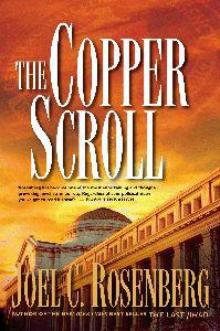 The Copper Scroll
The Copper Scroll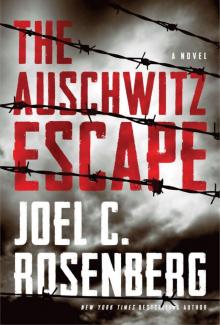 The Auschwitz Escape
The Auschwitz Escape The Last Jihad
The Last Jihad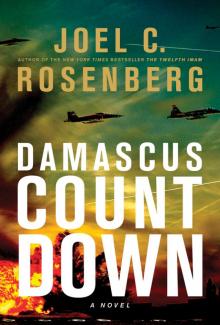 Damascus Countdown
Damascus Countdown The Persian Gamble
The Persian Gamble The Jerusalem Assassin
The Jerusalem Assassin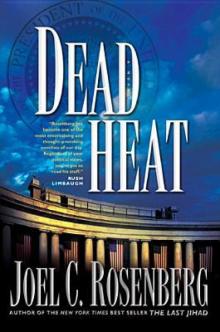 Dead Heat
Dead Heat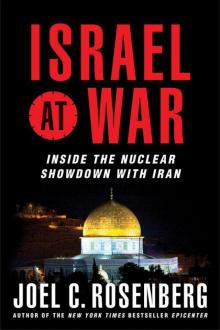 Israel at War: Inside the Nuclear Showdown With Iran
Israel at War: Inside the Nuclear Showdown With Iran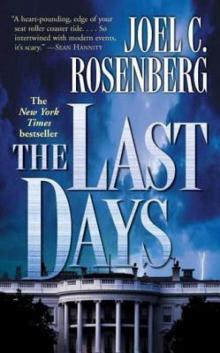 The Last Days
The Last Days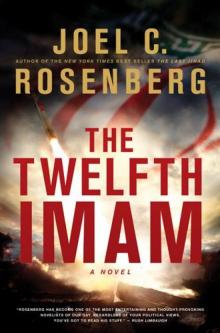 The Twelfth Imam
The Twelfth Imam Epicenter 2.0
Epicenter 2.0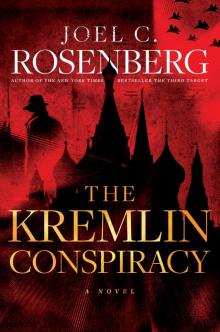 The Kremlin Conspiracy
The Kremlin Conspiracy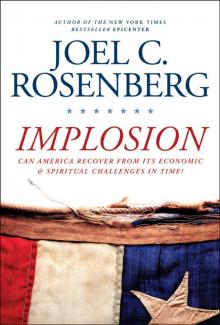 Implosion: Can America Recover From Its Economic and Spiritual Challenges in Time?
Implosion: Can America Recover From Its Economic and Spiritual Challenges in Time?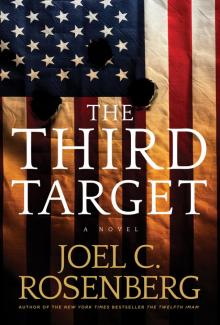 The Third Target: A J. B. Collins Novel
The Third Target: A J. B. Collins Novel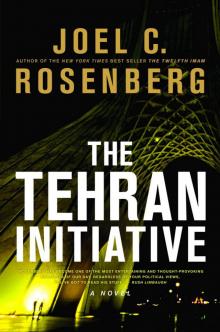 The Tehran Initiative
The Tehran Initiative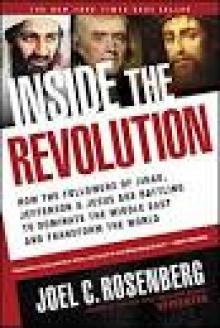 Inside the Revolution
Inside the Revolution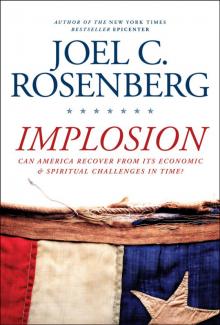 Implosion
Implosion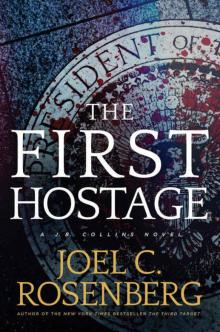 The First Hostage: A J. B. Collins Novel
The First Hostage: A J. B. Collins Novel